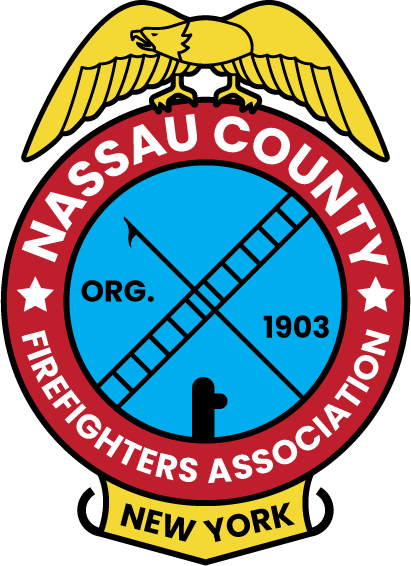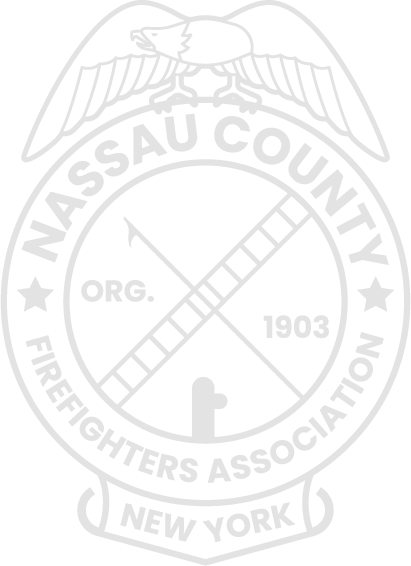Federal Action Will Impact Your Department
A letter from FASNY
The Federal Occupational Safety and Health Administration (OSHA) recently proposed significant changes to the OHSA Fire Brigade Standard (1910.156). The new OSHA 1910.156 rule (Emergency Response Standard), if approved in its current form, will dramatically change the face of the fire service in New York and across the nation. The tumultuous impact created by these changes will be felt by volunteer, combination and career departments alike.
While the goal of the new rule is to further protect the safety of emergency responders, it was crafted in a vacuum and does not reflect the challenges that emergency response agencies face in the real world. While the fire service fully agrees that responder safety is of paramount importance, that goal must be balanced with the abilities and resources of the agencies responsible for those individuals. After careful review, it is apparent that many of the changes and new requirements will negatively impact already struggling response agencies. In fact, the new standard could hamper recruitment and retention efforts and even cause many current firefighters to leave the service. Despite its bureaucratic “good intentions”, this new rule could actually decrease firefighter health and safety.
The 608-page document published by OSHA contains data and stories as to why the changes are needed. Based on our real-world experience, we question the reliability of some of the data and theories used to produce this proposal. Rather, there are less intrusive actions that fire service organizations could take that would have immediate positive impacts on firefighter safety and create little or no additional burdens. Several of these areas have been untouched by the proposed standard, while costly and time-consuming requirements have made their way into the proposed regulation. Twenty-two National Fire Protection Association (NFPA) standards have been fully incorporated into the new OSHA standard by reference, with another fourteen included in part. This means that anyplace the NFPA standard says “shall” or “must” the AHJ would be responsible to adhere to them.
These changes will have major implications on every AHJ, fire officer and firefighter. Our concern here is not merely that they are unfunded mandates. It is the fact that it will place increased liability on organizations especially if they suffer a firefighter injury or death. The unattainable nature of this proposed standard virtually ensures fines and litigation at a level we have never seen.
The proposed changes have been published in the Federal Register and are currently in a 90-day comment period that concludes on May 6. The fire service must be united in their response to this potentially devastating governmental action. This includes involvement by your fire service organization. We need you to inform your department of this situation and ask them to request that the comment period be extended for an additional 60 days. They should also request that OSHA hold an “in person” hearing where testimony can be presented. Further, every AHJ should review the proposed rulemaking and submit comments on how it would negatively impact their organization. The importance of immediate action by every AHJ cannot be overstated.
To Submit a Comment for the OSHA 1910.156 Rule
- Go to the State Fire Districts Website: afdsny.org
- Click on OSHA Urgent Action Needed
- Scroll down to: "TO SUBMIT A COMMENT"
- Click on the green button: "SUBMIT A FORMAL COMMENT"
- Comment as follows:
As a Volunteer Firefighter in New York State, I'm very concerned about the OSHA proposed revision of the Fire Brigade Rule to convert it to the Emergency Response Rule. I recognize that the health and safety of first responders is a paramount concern. However, the New York State Volunteer Fire Service needs time to review the changes proposed, the tasks created, and the costs associated with the revision of this rule.
I would respectfully request a ninety (90) day extension to the comment period and further request that OSHA provide a public hearing scheduled with sufficient notice to enable our leadership to make arrangements to appear to provide live comment at such hearing - Complete the rest of the information and submit the comment
Thank you for your support in this very important matter
Department of Labor seeks to expand, establish protections for today's emergency response workers
OSHA proposal seeks to update 1980s ‘Fire Brigades' standard
WASHINGTON – The U.S. Department of Labor today announced that its Occupational Safety and Health Administration will publish a proposal in January 2024 to update an existing standard and expand safety and health protections for emergency responders, including firefighters, emergency medical service providers and technical search and rescue workers. President Biden is committed to protecting our emergency responders, the same way they protect us every day—and this proposed rule is a critical step to ensure their safety.
OSHA will issue a Notice of Proposed Rulemaking to modernize the agency's "Fire Brigades" standard — first published in 1980 — as its protections for a narrow set of industrial and private firefighters have become outdated.
Currently, OSHA regulations protect emergency responders' safety and health in a patchwork of decades-old, hazard-specific standards. Not designed as comprehensive emergency response standards, they fail to address the full range of job hazards faced by today's emergency responders. The newly named "Emergency Response" standard updates safety and health protections in line with national consensus standards for a broad range of workers exposed to hazards that arise during and after fires and other emergencies.
The proposal will include major changes for protective clothing and equipment and significant improvements in safety and health practices that the industry generally accepts as standard procedures.
"Emergency responders are critical workers in all of our communities, and they deserve protections that keep up with today's industry practices," said Assistant Secretary for Occupational Safety and Health Doug Parker. "We are proposing much-needed updates that will expand protections for emergency workers and bring our standards closer to common industry procedures."
The proposed rule requires employers to obtain baseline medical screening for all emergency responders and ensure continued medical surveillance for responders when they are exposed to the byproducts of fires and explosions more than 15 times annually. The proposal also includes a variety of other requirements to better protect both workers whose primary job is emergency response and those whose emergency response duties are in addition to their regular daily work duties.
Learn more about OSHA's Emergency Response Rulemaking. The public can submit comments to the docket once the Federal Register formally publishes the proposed rule.


